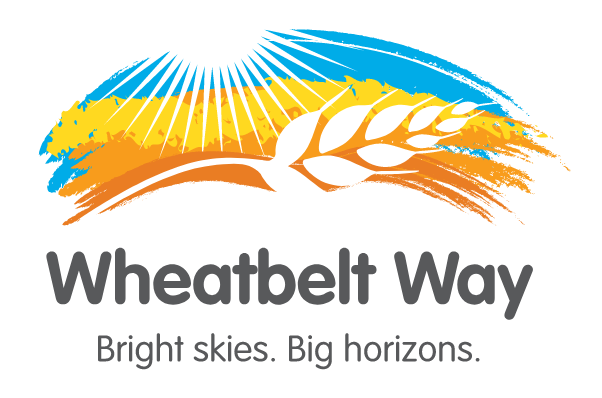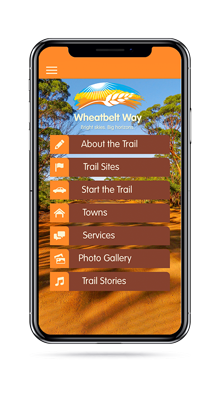Spring wildflowers of the Wheatbelt Way are a great example of the hardiness and ingenuity of nature. All of the beautiful wildflower photographs included in this story were taken between July and September of 2019. The entire Wheatbelt Way region experienced a dry start to winter, with the first rains for 2019 only arriving in June. Not only has there been a dry start to the year, the area has also not received large falls since June, with only small falls distributed at fairly regular intervals from then on.
Nevertheless, as you will see in the photographs below, wildflowers always try their very best to remind us of the beauty that is life in all its forms.
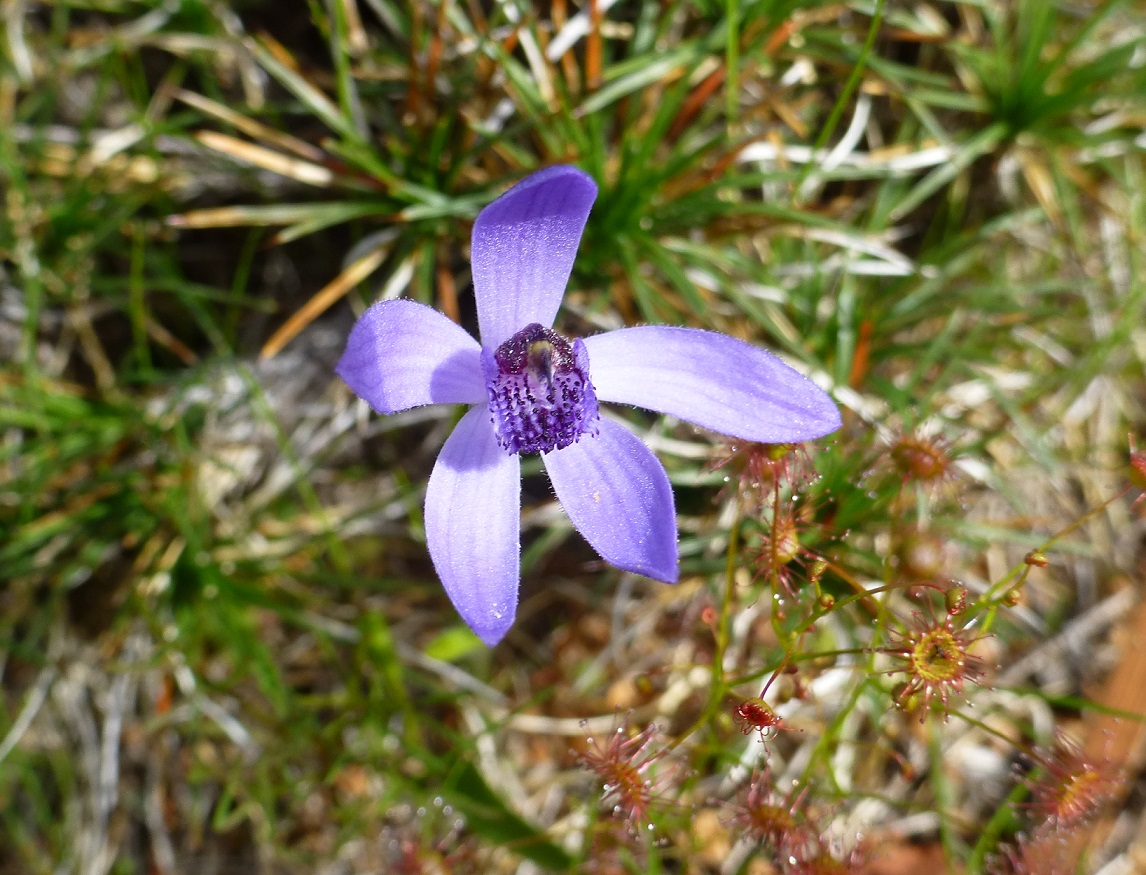
A blue beard orchid photographed at Newcarlbeon Rock, Koorda (Philadenia deformis).
Wildflowers do require a bit of fossicking to find, as they normally do not like well-trodden public areas. I would recommend starting around the base of granite rocks where moisture is likely to collect and stimulate wildflower growth. Also, many wildflowers are no more than 10 centimetres in height, and as a result they can be very easy to miss if you don’t keep your eyes to the ground. Their intricate beauty is however well worth the search, and these days anyone can get amazing photos using a smartphone or a standard pocket sized camera (like I used to take all of the photos within this article).
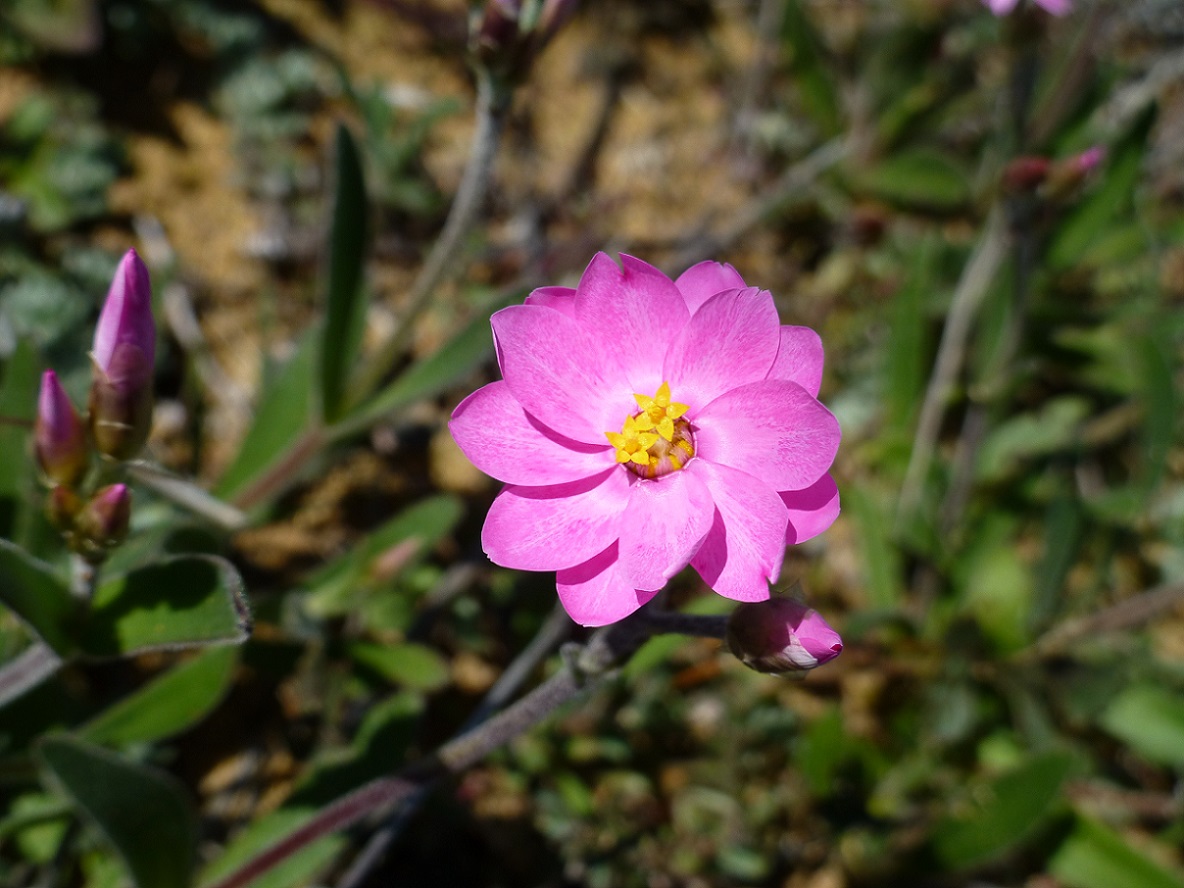 Pink everlastings photographed on the Koorda-Bullfinch Road (Schoenia cassiniana).
Pink everlastings photographed on the Koorda-Bullfinch Road (Schoenia cassiniana).
One of the most common wildflowers that emerge for spring in the Wheatbelt Way region are everlastings, or paper daises. Everlastings are a hardy wildflower characterised by papery petals, and they come in a variety of colours and sizes, from large white everlastings reaching 30 centimetres in height to tiny yellow everlastings reaching only approximately six centimetres tall. The medium height pink everlasting or Schoenia cassiniana is the most commonly seen, with small carpets visible on roadsides. In wet years extensive carpets of everlastings emerge, lighting up the landscape with colour.
 A gorgeous yellow common donkey orchid (Diuris longifolia) photographed at Boodalin Soak, Westonia.
A gorgeous yellow common donkey orchid (Diuris longifolia) photographed at Boodalin Soak, Westonia.
Though a significantly less common find, orchids also emerge during spring in the region. Orchids are a spectacular sight, and come in a wide variety of shapes, colours and sizes. The fact that they are harder to find makes discovering one an even greater delight. This year clusters of the common donkey orchid have even appeared in certain locations, which is testament to the hardiness of the orchid species.
Below is my list of the best Wheatbelt Way wildflower locations for spring 2019, ranked in my own particular order of preference.
Boodalin Soak, Westonia
Boodalin Soak near Westonia is a great place to find a variety of wildflowers. There are small carpets of pink everlastings as you enter the reserve and along the roadside. Once you turn into Boodalin Soak off the main road, turn once more onto the road that leads to the granite rock (rather than onto the road that leads to the soak itself). After a short stroll up behind the rock, there are a range of orchids to be discovered.
You can also contact the Shire of Westonia who have put together a map showing tourists exactly where they can find wildflowers in the area this spring.
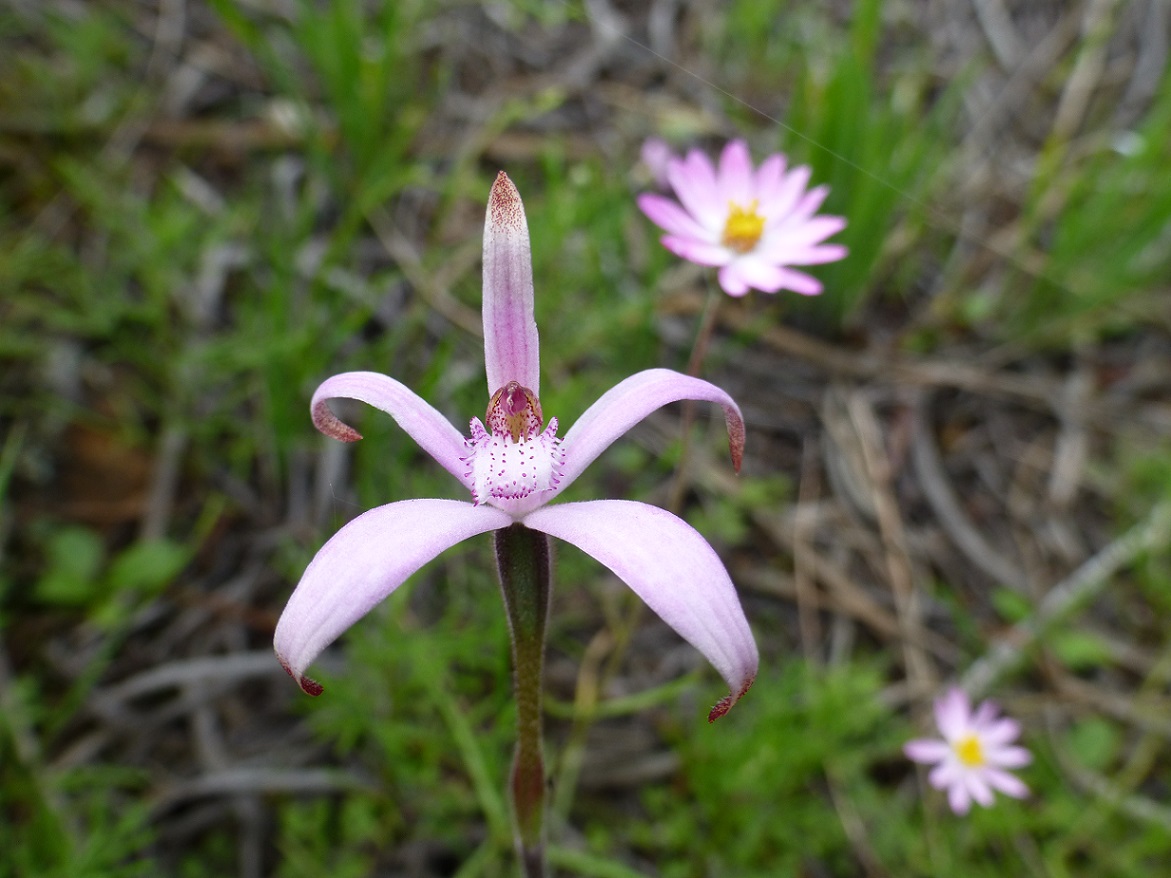 The fantastically named Sugar Candy orchid (Caladenia hirta), photographed at Boodalin Soak, Westonia.
The fantastically named Sugar Candy orchid (Caladenia hirta), photographed at Boodalin Soak, Westonia.
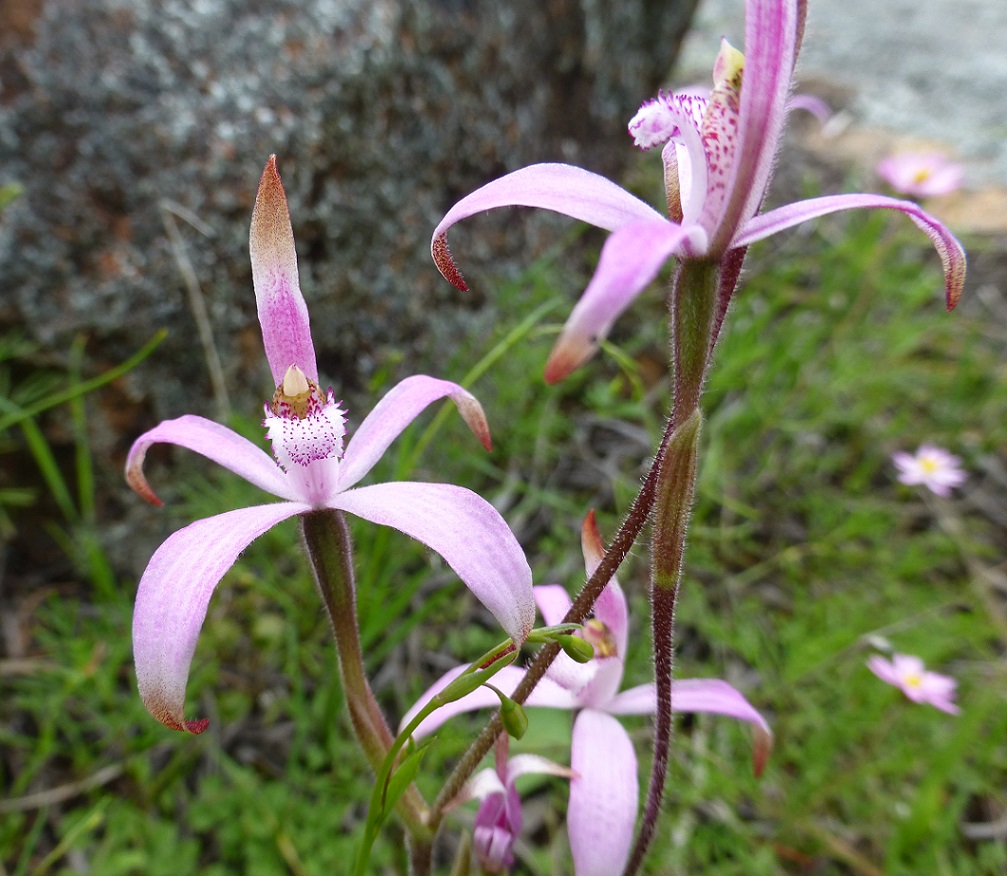 Sugar Candy orchid (Caladenia hirta) and friends photographed at Boodalin Soak, Westonia.
Sugar Candy orchid (Caladenia hirta) and friends photographed at Boodalin Soak, Westonia.
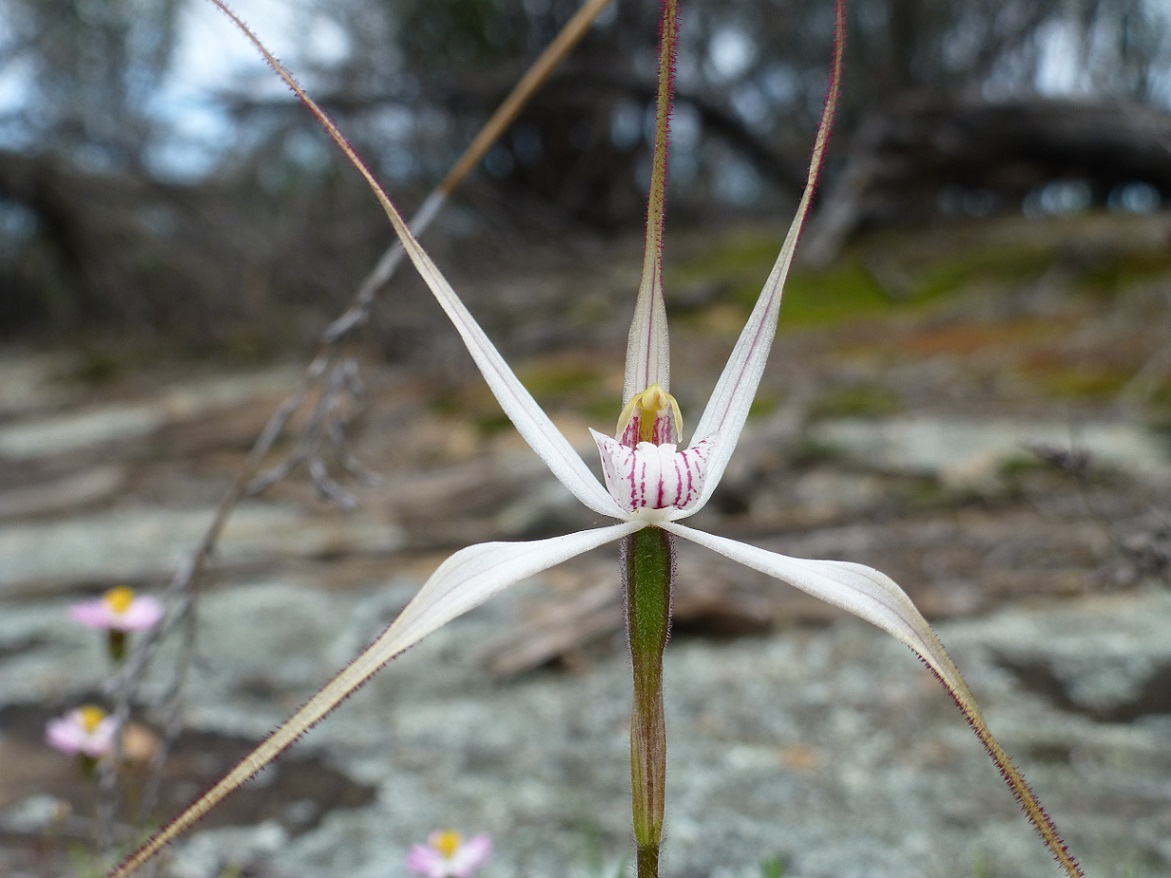 A beautiful wispy Spider Orchid photographed at Boodalin Soak, Westonia (Caladenia denticulate).
A beautiful wispy Spider Orchid photographed at Boodalin Soak, Westonia (Caladenia denticulate).
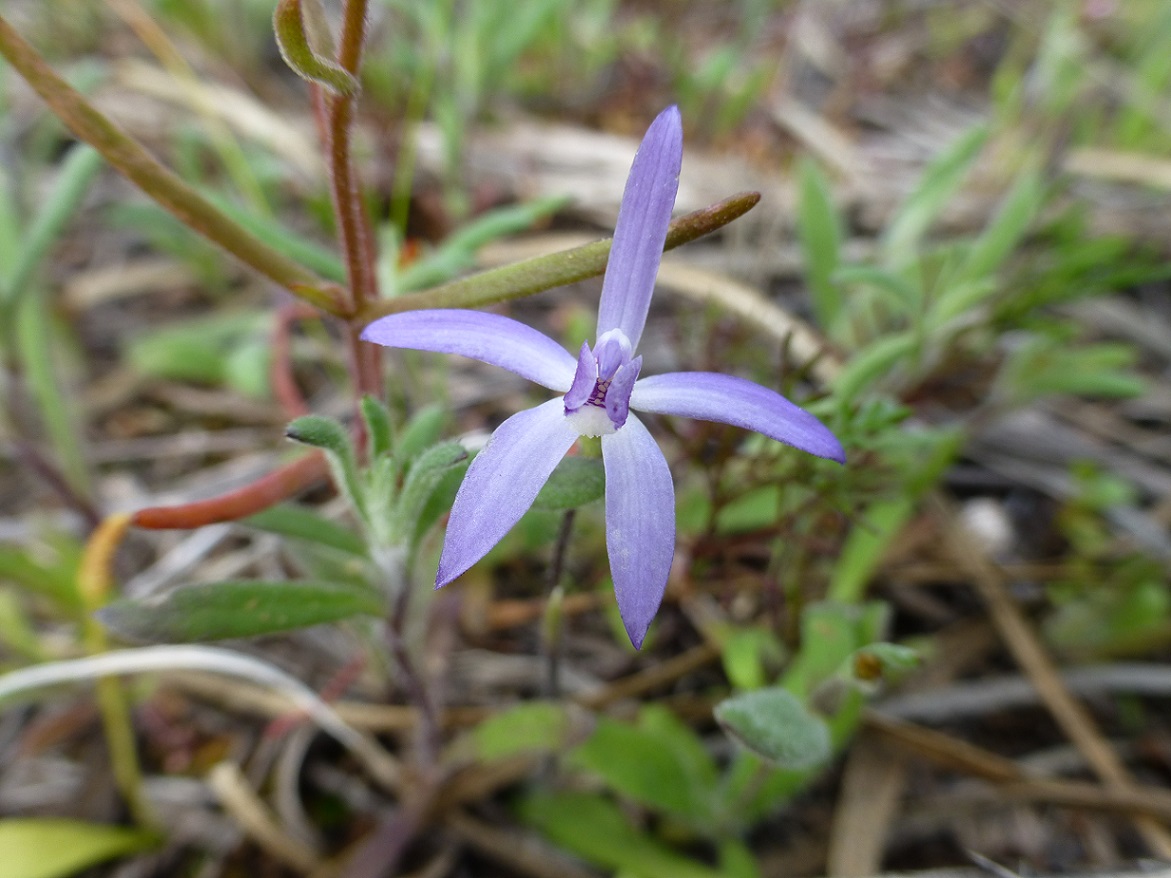 The tiny blue fairy orchid photographed at Boodalin Soak, Westonia.
The tiny blue fairy orchid photographed at Boodalin Soak, Westonia.
Sandford Rocks, Westonia
Sandford Rocks is a great reserve to visit in its own right, with a bird hide and granite rock caves. This year there are also smatterings of pink everlastings and a significant number of yellow common donkey orchids. I was also delighted to find blue fairy orchid, a jack in the box orchid and other wildflowers I found on the day I visited.
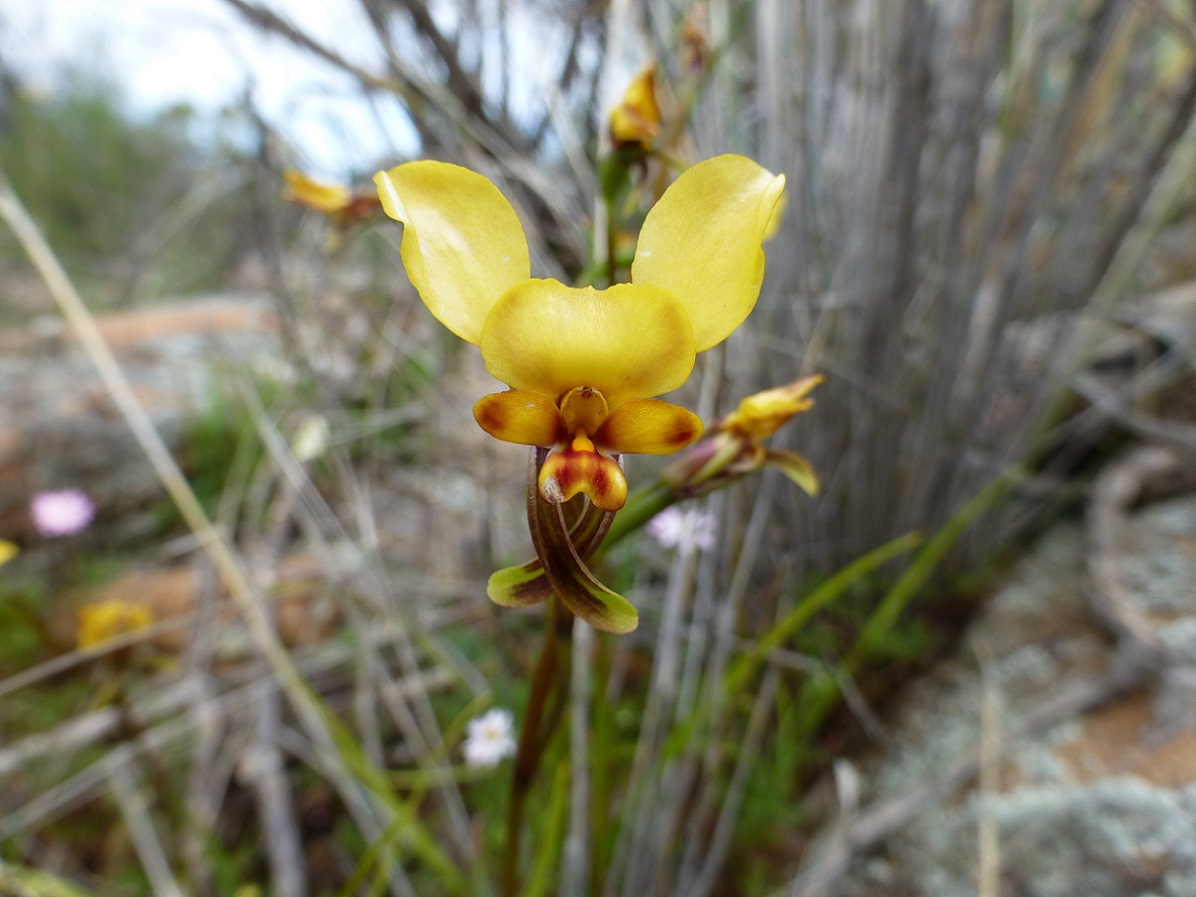 A gorgeous yellow common donkey orchid (Diuris longifolia) photographed at Sandford Rocks, Westonia.
A gorgeous yellow common donkey orchid (Diuris longifolia) photographed at Sandford Rocks, Westonia.
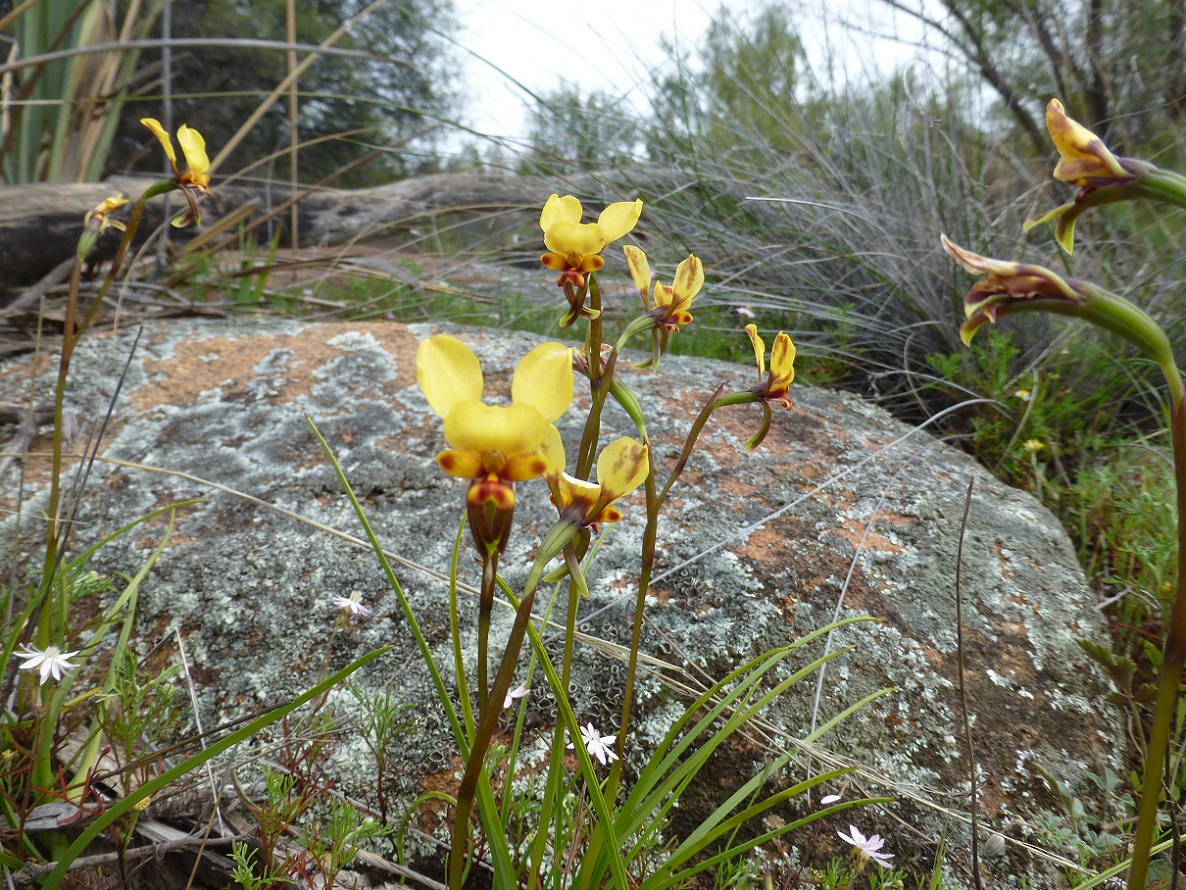 A family of common yellow donkey orchids at Sandford Rocks, Westonia.
A family of common yellow donkey orchids at Sandford Rocks, Westonia.
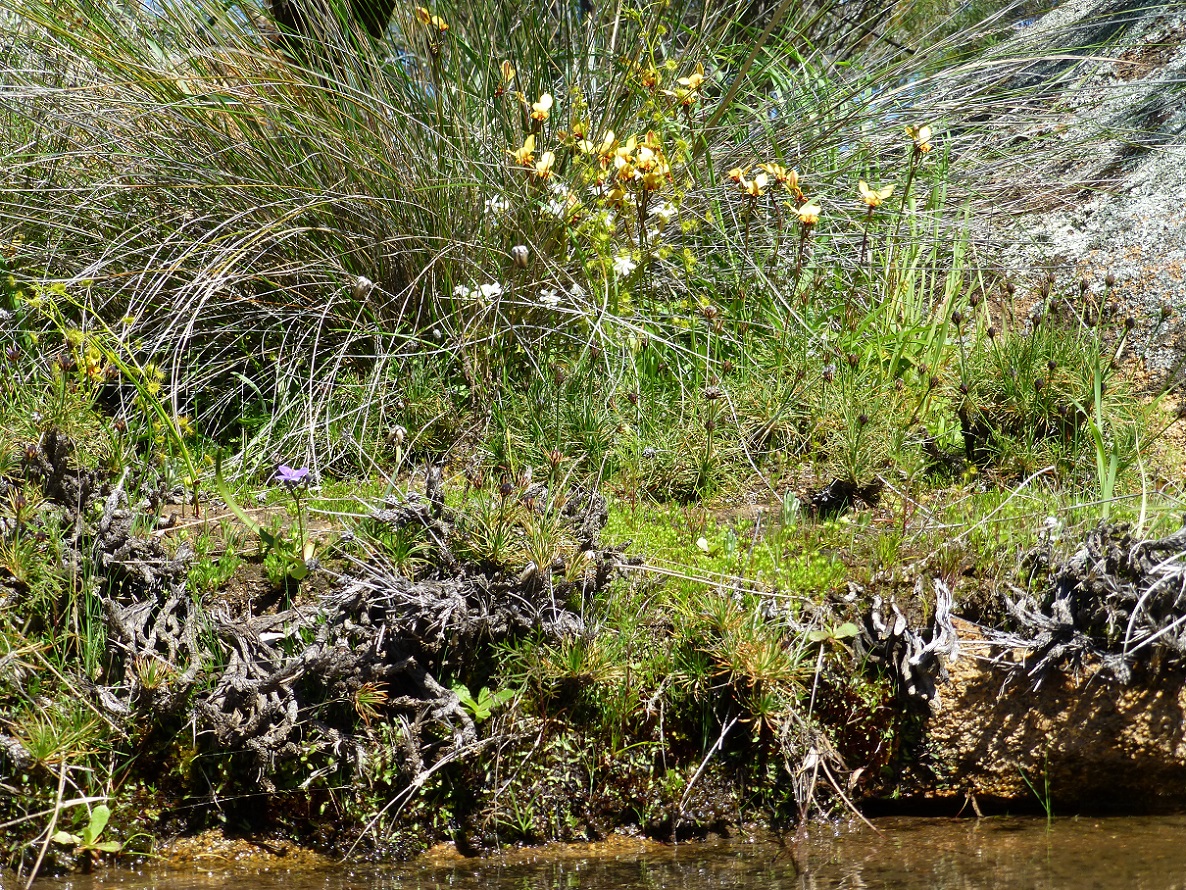 A cluster of the distinctive yellow donkey orchid “ears” visible within the vegetation above a small granite rock creek at Sandford Rocks, Westonia.
A cluster of the distinctive yellow donkey orchid “ears” visible within the vegetation above a small granite rock creek at Sandford Rocks, Westonia.
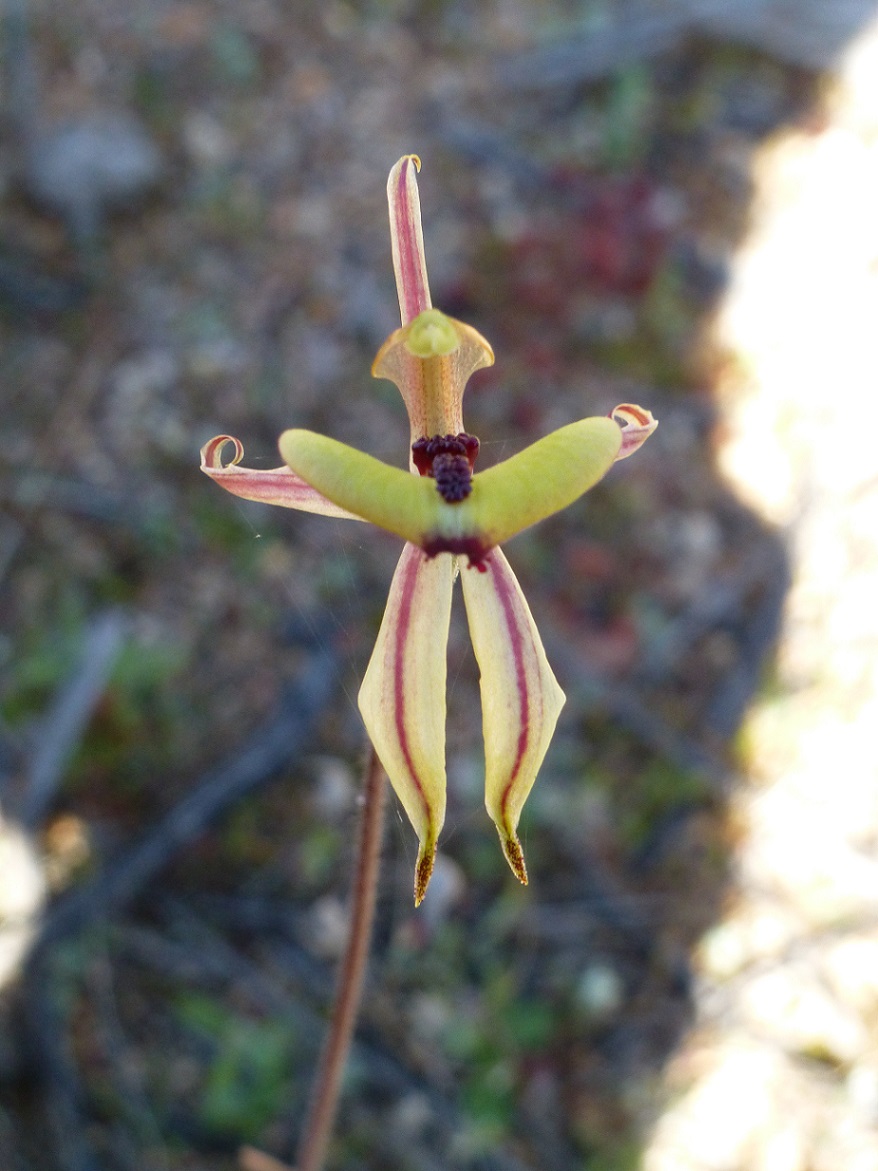 The amazing Jack in the Box orchid (Caladenia roei), photographed at Sandford Rocks, Westonia. A small spider has actually made its web on the back side of the orchid, making the most of its star-like dimensions.
The amazing Jack in the Box orchid (Caladenia roei), photographed at Sandford Rocks, Westonia. A small spider has actually made its web on the back side of the orchid, making the most of its star-like dimensions.
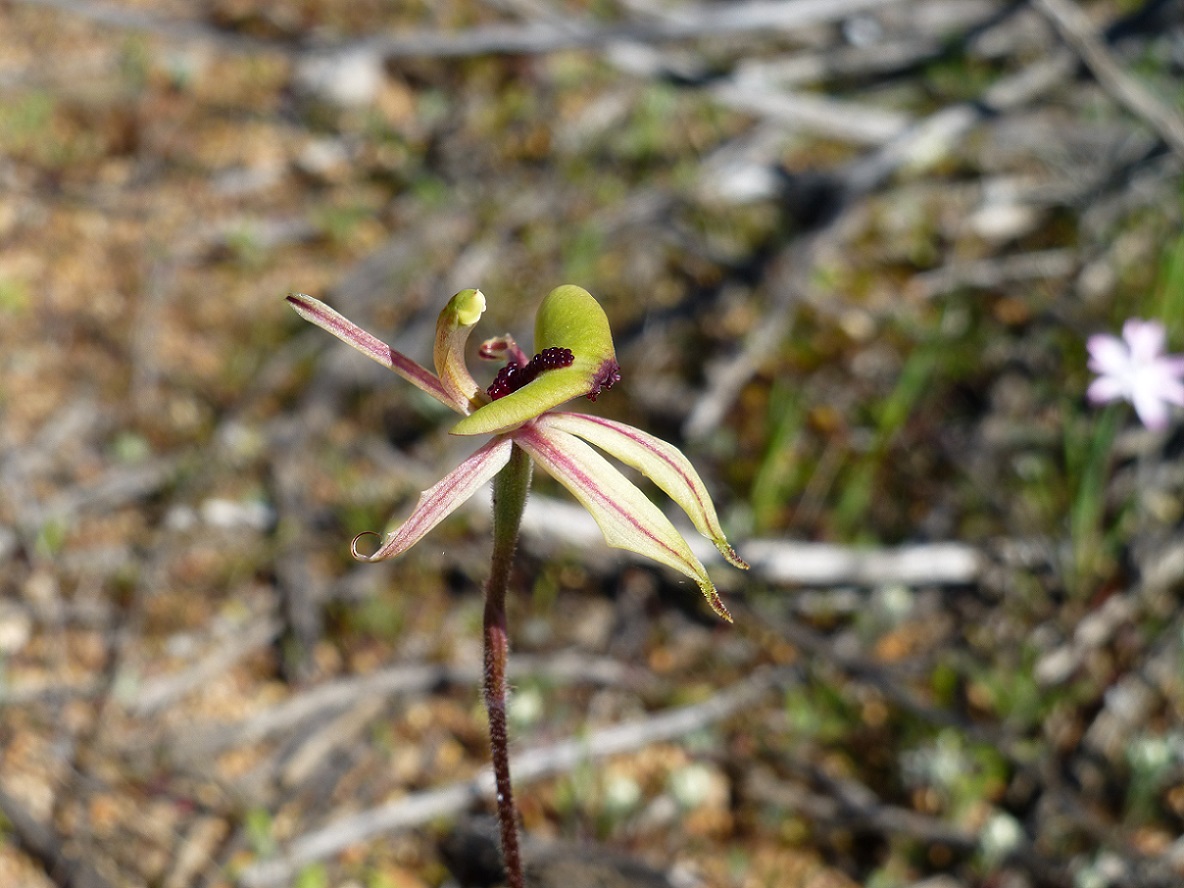 Side view of the amazing Jack in the Box orchid, photographed at Sandford Rocks, Westonia.
Side view of the amazing Jack in the Box orchid, photographed at Sandford Rocks, Westonia.
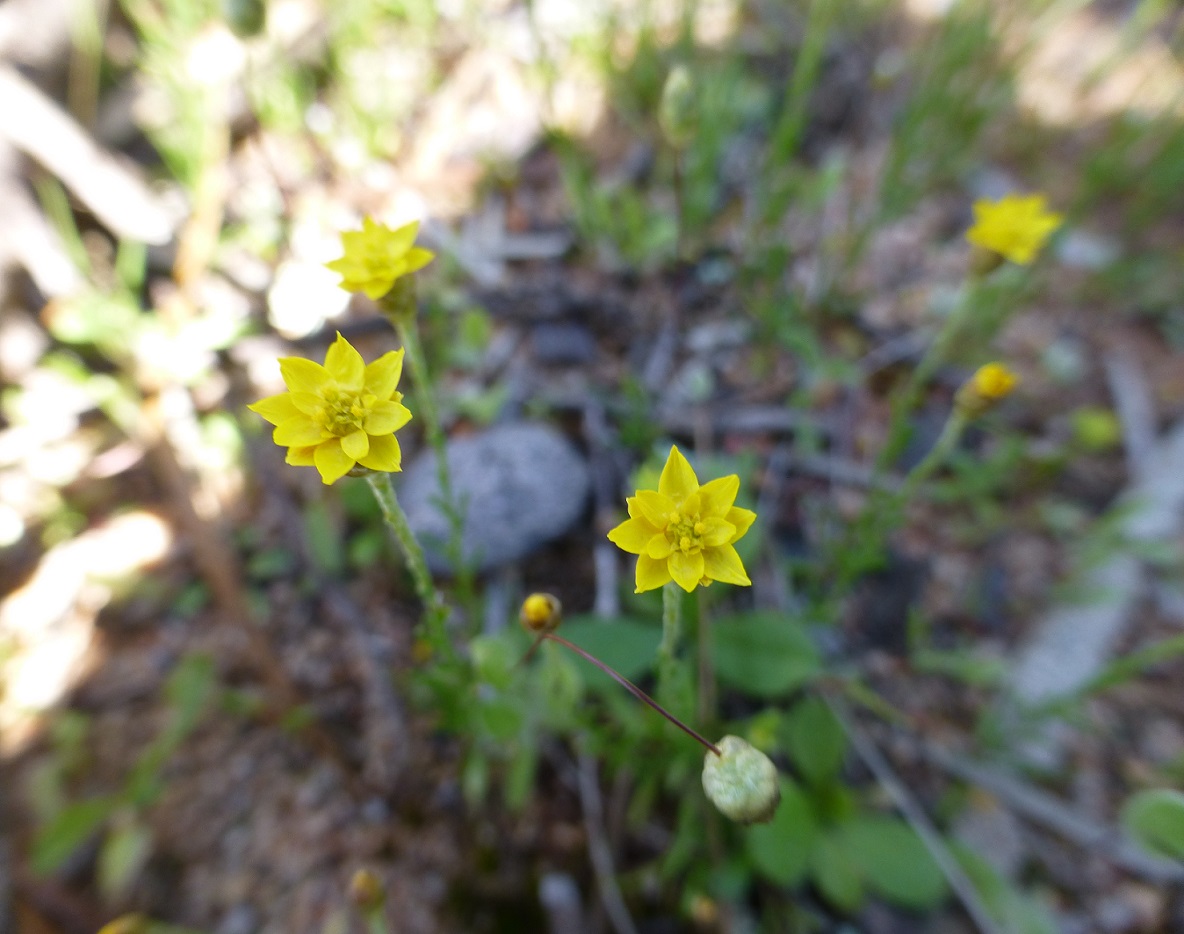 Gorgeous tiny yellow everlastings at Sandford Rocks, Westonia.
Gorgeous tiny yellow everlastings at Sandford Rocks, Westonia.
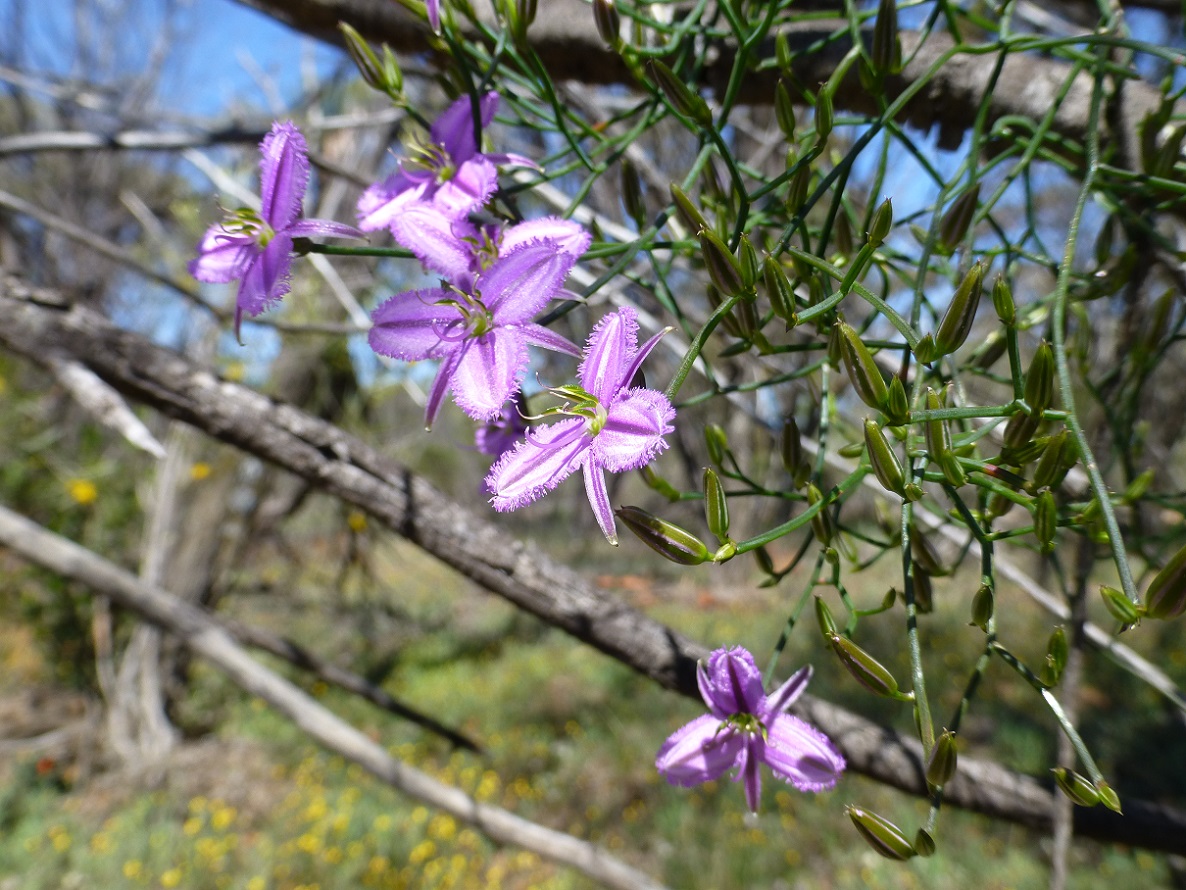 Thysantous mulitflorus (Native Fringed Lily), Sandford Rocks, Westonia.
Thysantous mulitflorus (Native Fringed Lily), Sandford Rocks, Westonia.
* I would like to extend huge thanks to Jasmine Geier & Stacey Geier for their invaluable assistance with finding the Westonia wildflowers.
Datjoin Rock, Beacon
At Datjoin Rock I enjoyed strolling through small carpets of pink and white everlastings. On the day I visited I was also treated to the rejuvenating scent of the aptly named vanilla bush Grevillea trachytheca, which was unmistakeable. Orchids have also been found at Datjoin Rock this spring.
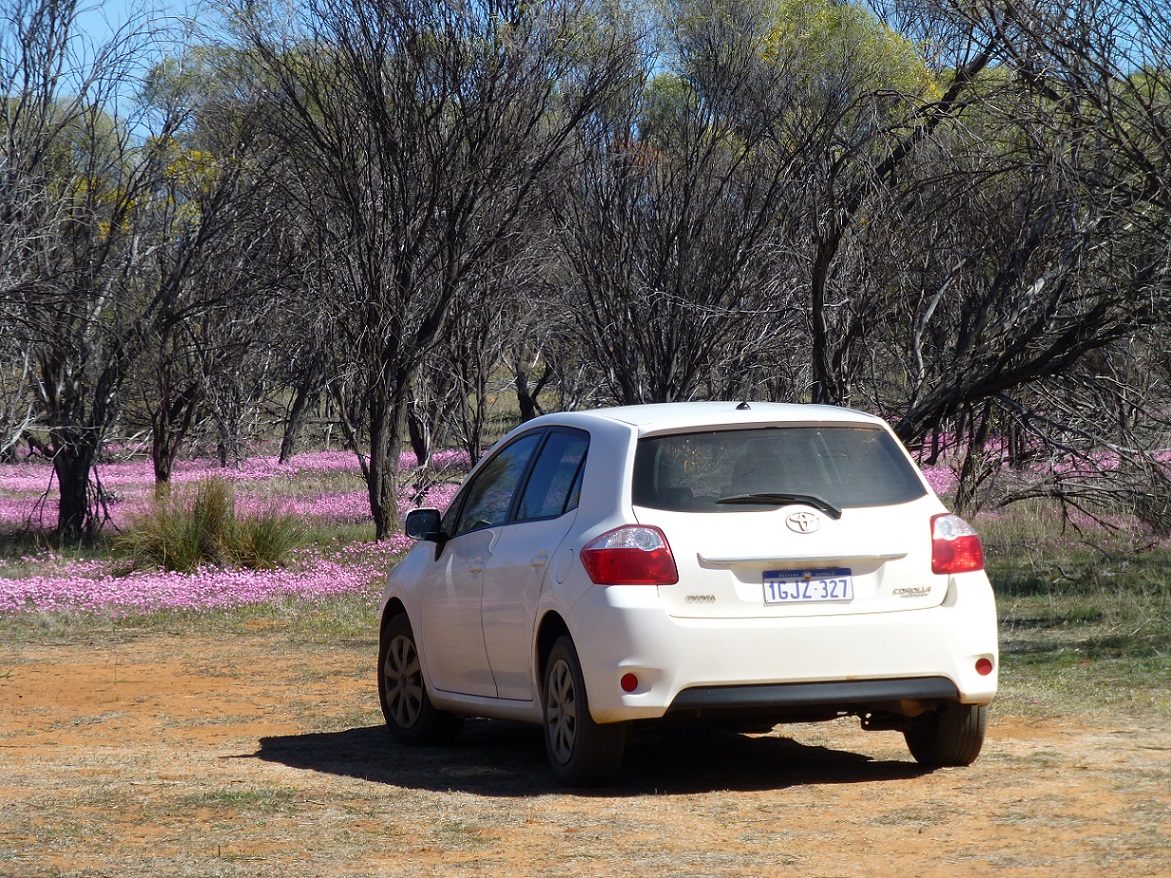 Small carpets of pink everlastings at Datjoin Rock, Beacon.
Small carpets of pink everlastings at Datjoin Rock, Beacon.
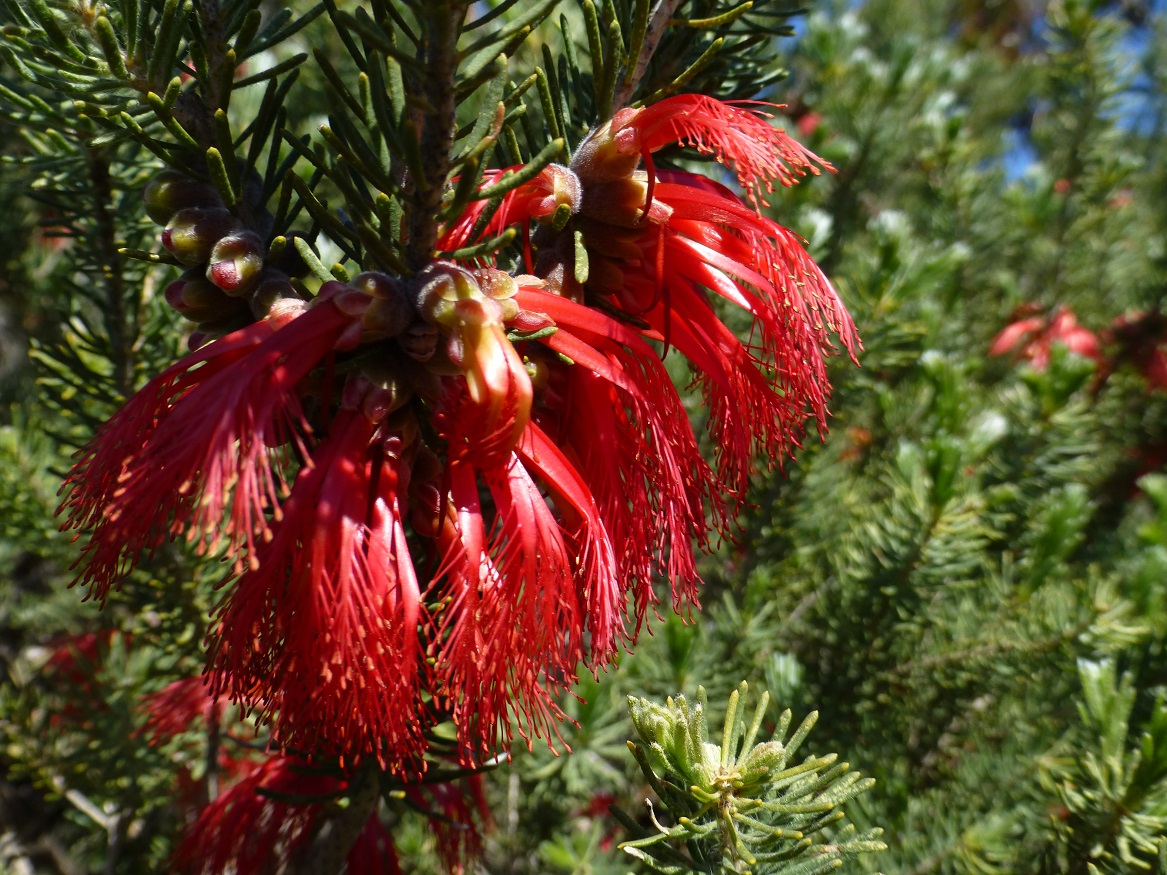 The beautiful One-sided Bottlebrush (Calothamnus quadrifidus) at Datjoin Rock.
The beautiful One-sided Bottlebrush (Calothamnus quadrifidus) at Datjoin Rock.
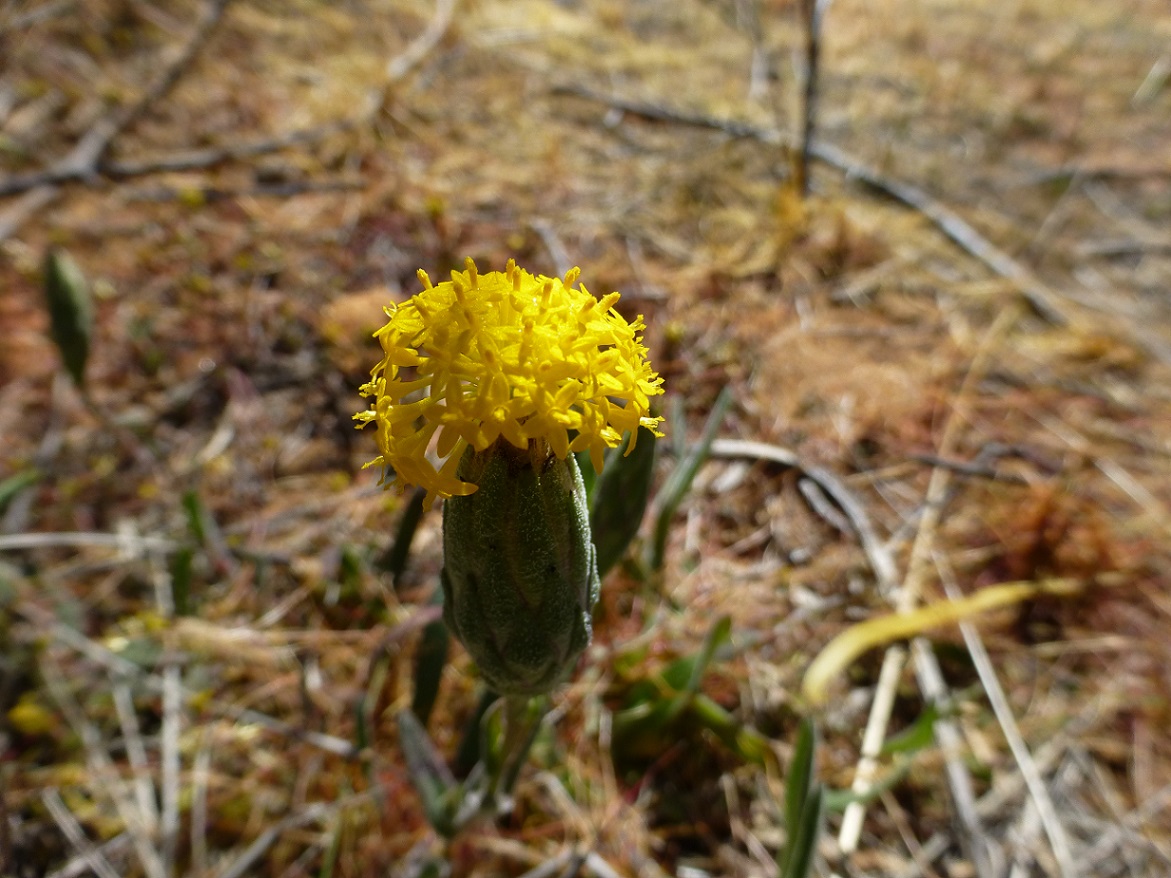 A rather spectacular unknown (Pimelea sp.?) yellow wildflower at Datjoin Rock, Beacon.
A rather spectacular unknown (Pimelea sp.?) yellow wildflower at Datjoin Rock, Beacon.
Eaglestone Rock, Nungarin
I found small carpets of pink and white everlastings at Eaglestone Rock, as well as more small carpets of brilliant pink everlastings along Lake Brown South Road and along major routes between Eaglestone and Mukinbudin. Other native plants were producing a splendid show at the rock.
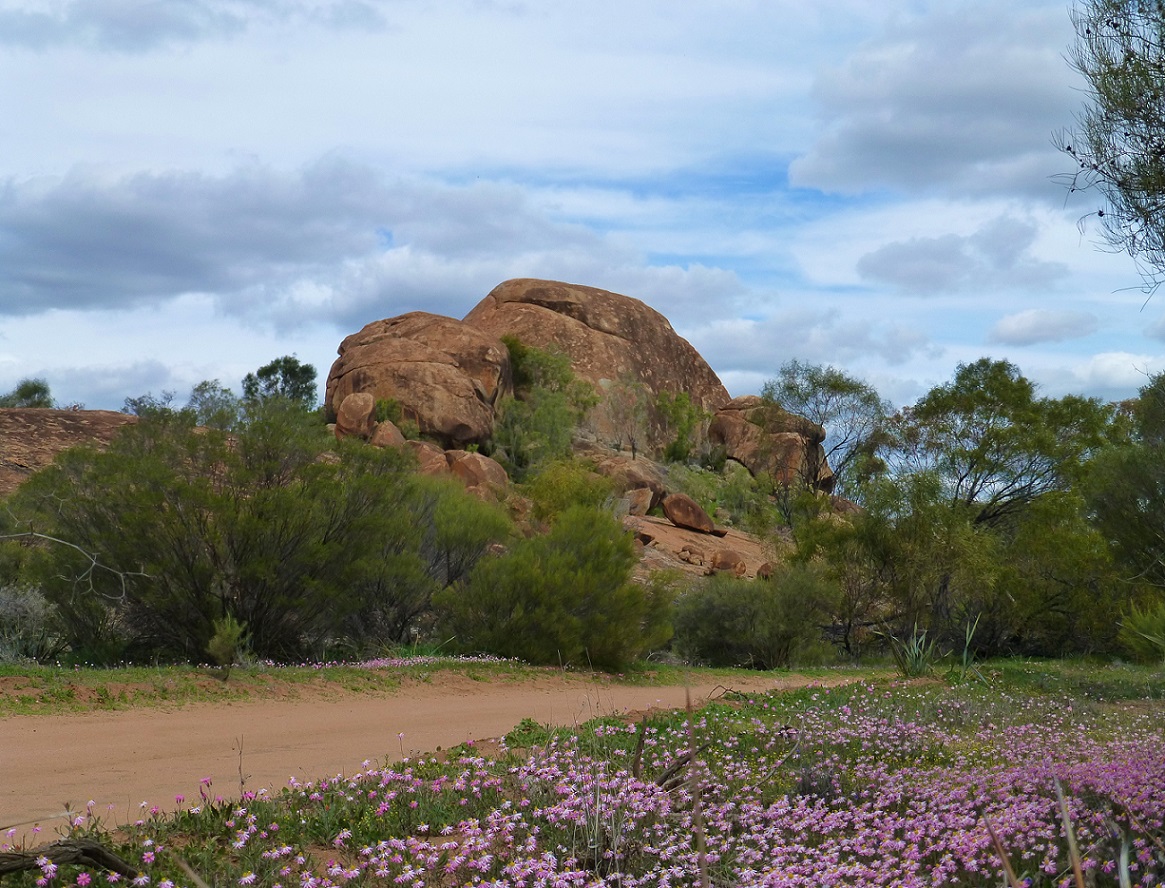 Pink everlastings visible along the roadside at Eaglestone Rock.
Pink everlastings visible along the roadside at Eaglestone Rock.
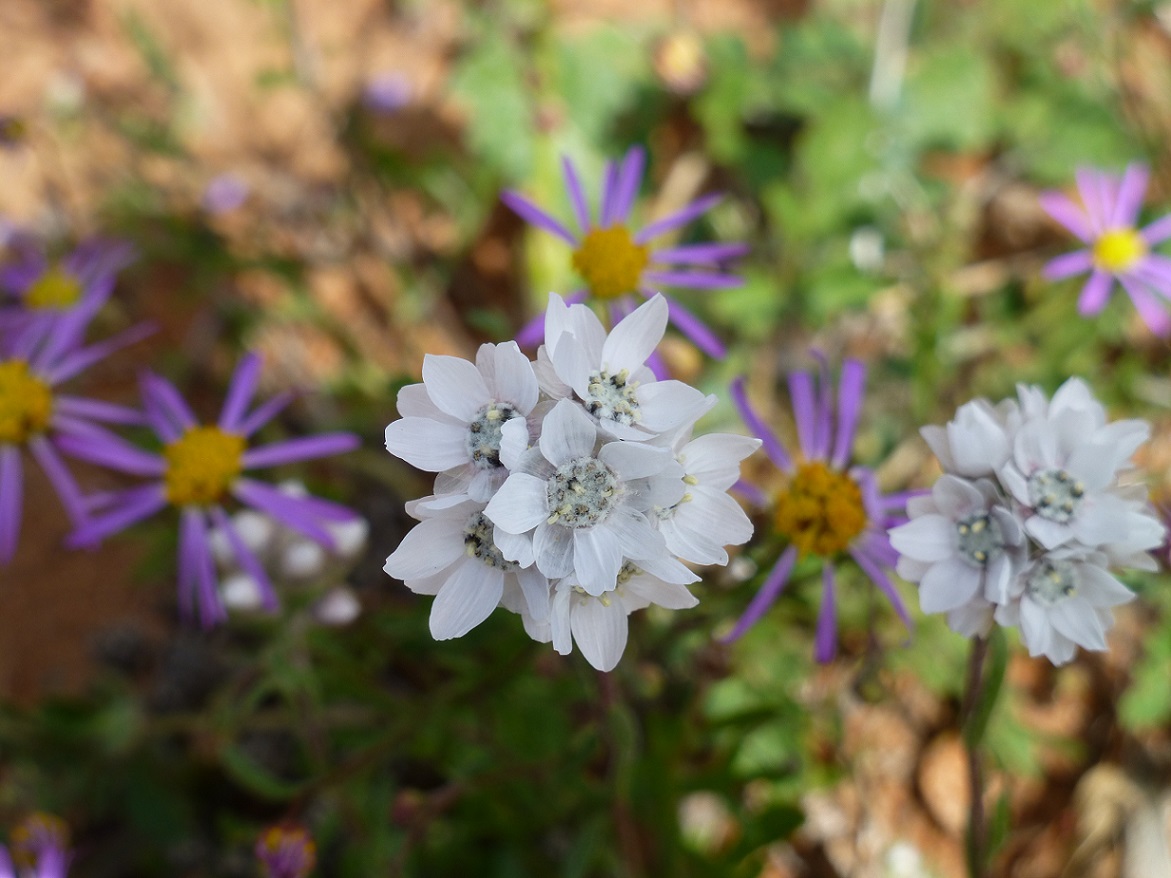 White everlastings seen at Eaglestone Rock.
White everlastings seen at Eaglestone Rock.
 Unknown native flowers, Eaglestone Rock, Nungarin.
Unknown native flowers, Eaglestone Rock, Nungarin.
Weira Reserve, Mukinbudin
I was impressed to find a fantastic and easily accessible parking and camping area at Weira Reserve, with tables, fire pits and a toilet. As an added bonus local birds were in full voice on the day I visited, and smatterings of pink and white everlastings were visible, even around the camp site.
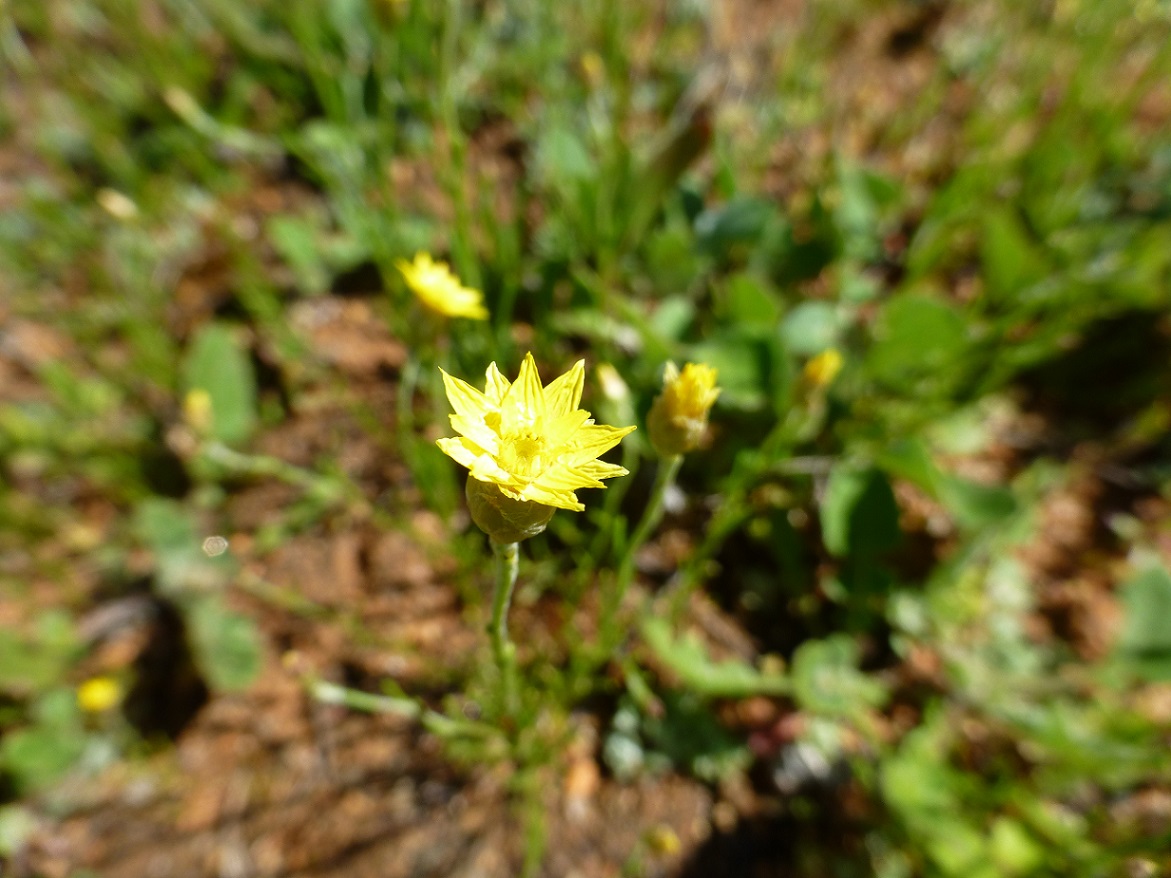 Tiny yellow everlastings photographed at Weira Reserve near Mukinbudin.
Tiny yellow everlastings photographed at Weira Reserve near Mukinbudin.
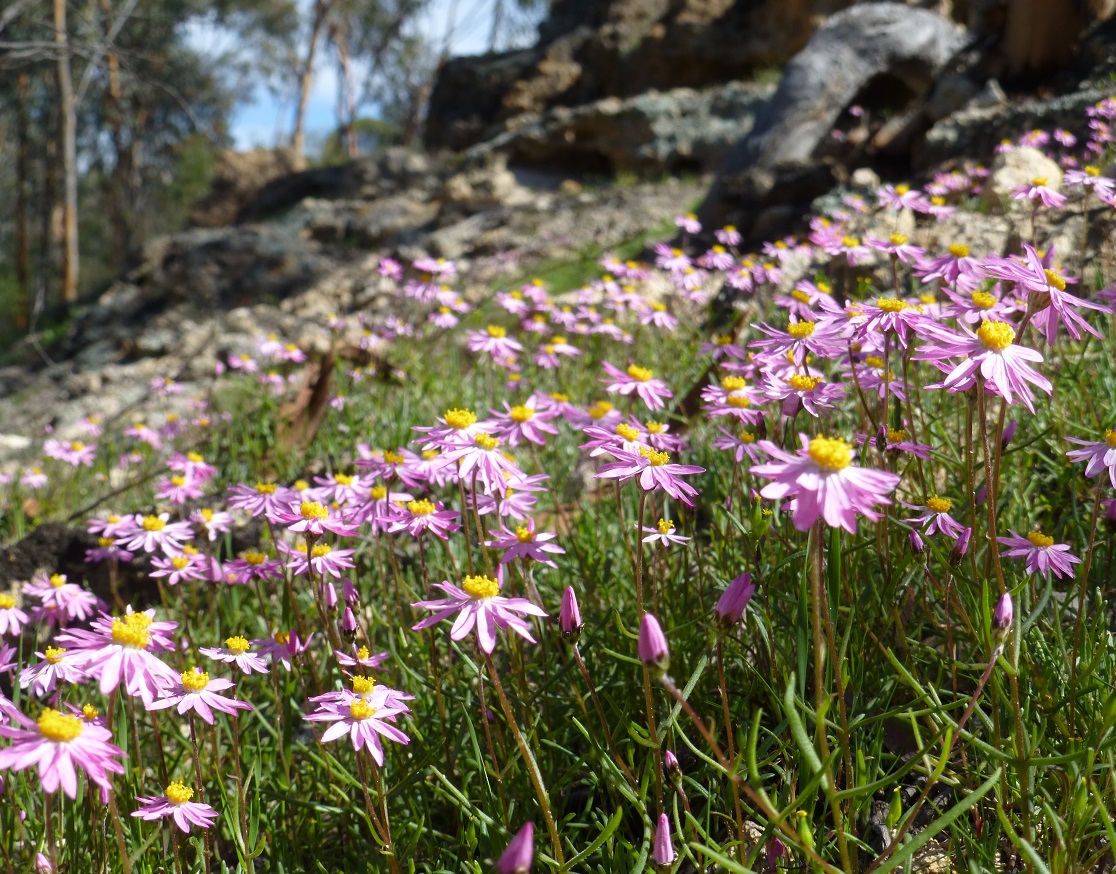 Pink everlastings sunbaking at Weira Reserve, Mukinbudin.
Pink everlastings sunbaking at Weira Reserve, Mukinbudin.
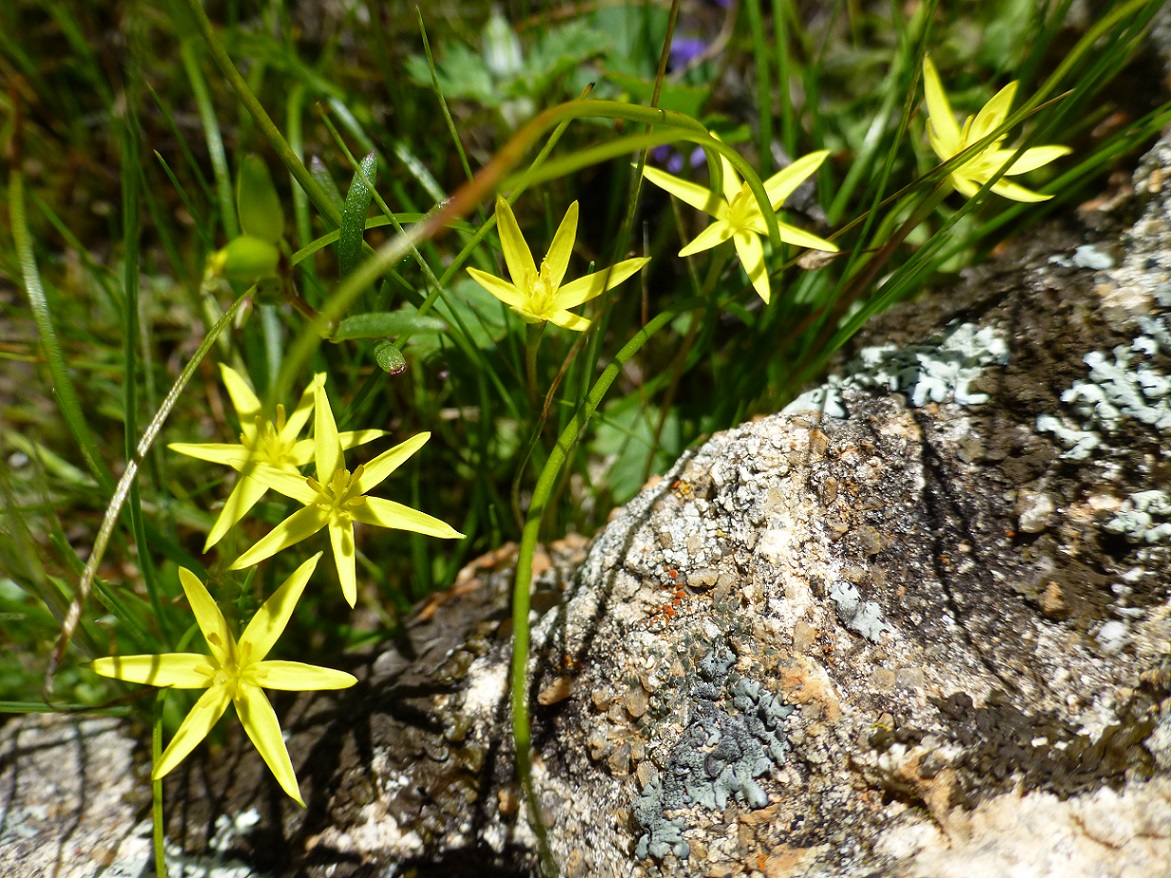 Striking small yellow wildflowers shouldering a granite rock at Weira Reserve, Mukinbudin.
Striking small yellow wildflowers shouldering a granite rock at Weira Reserve, Mukinbudin.
Marshall Rock, Bencubbin
At Marshall Rock I again found small clusters of white, pink and tiny yellow everlastings, as well as native flowers out in force. The leafy camping area and fabulous views from the top of the rock were a huge additional bonus.
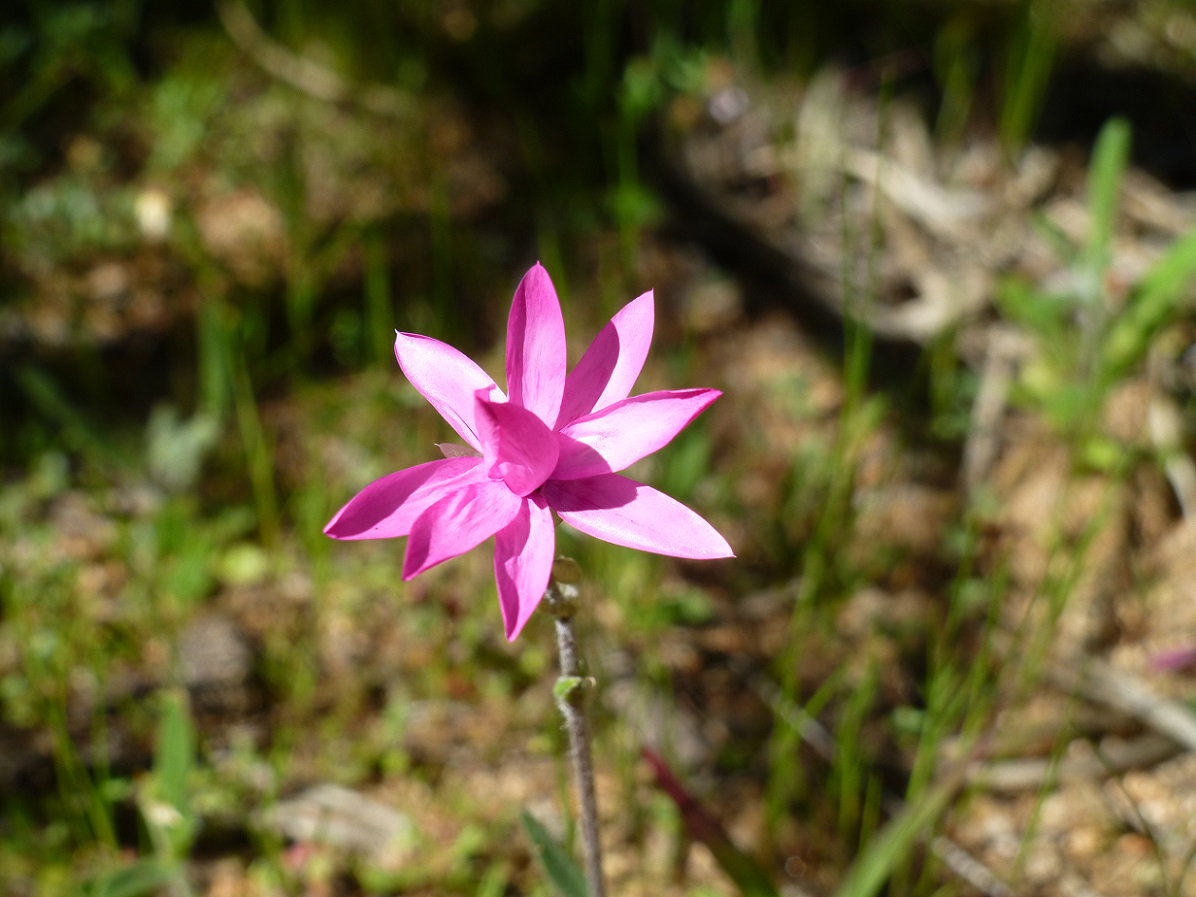 Pink everlasting at Marshall Rock, Bencubbin.
Pink everlasting at Marshall Rock, Bencubbin.
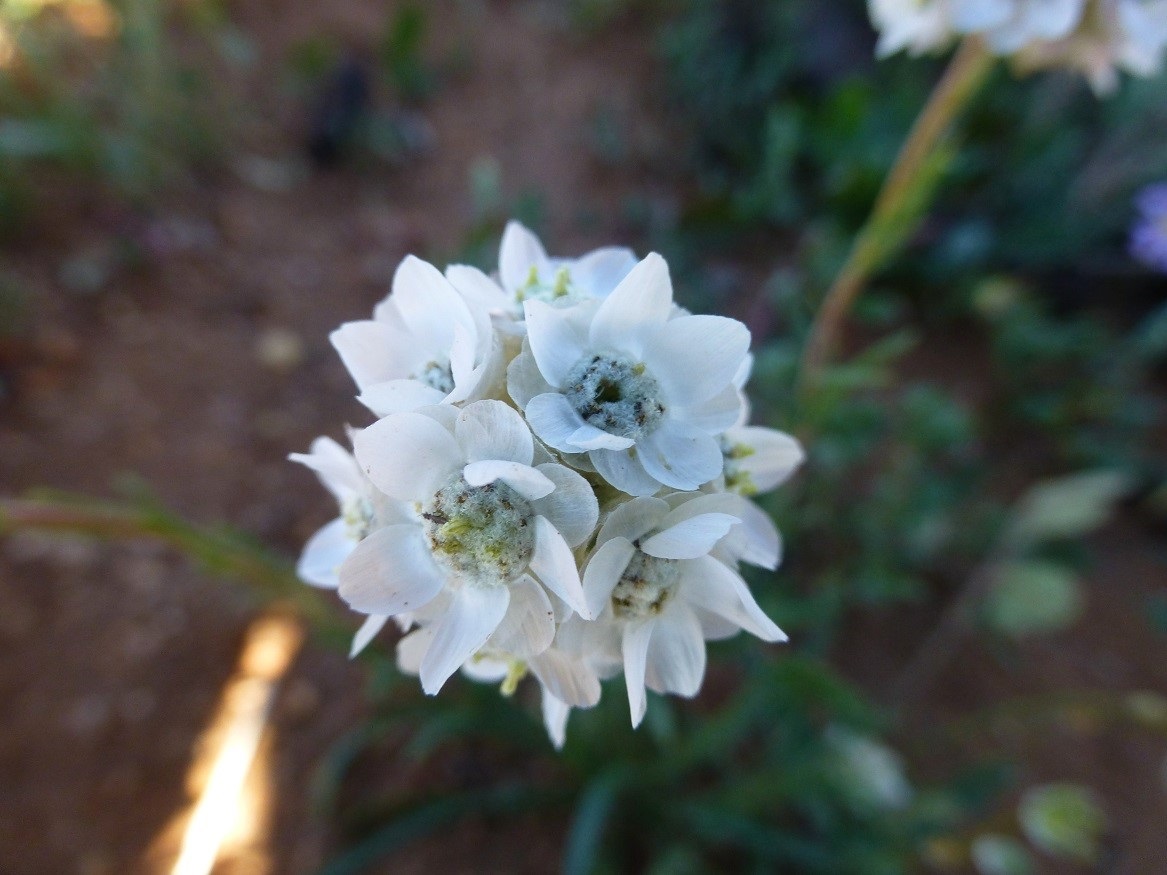 White everlasting at Marshall Rock, Bencubbin.
White everlasting at Marshall Rock, Bencubbin.
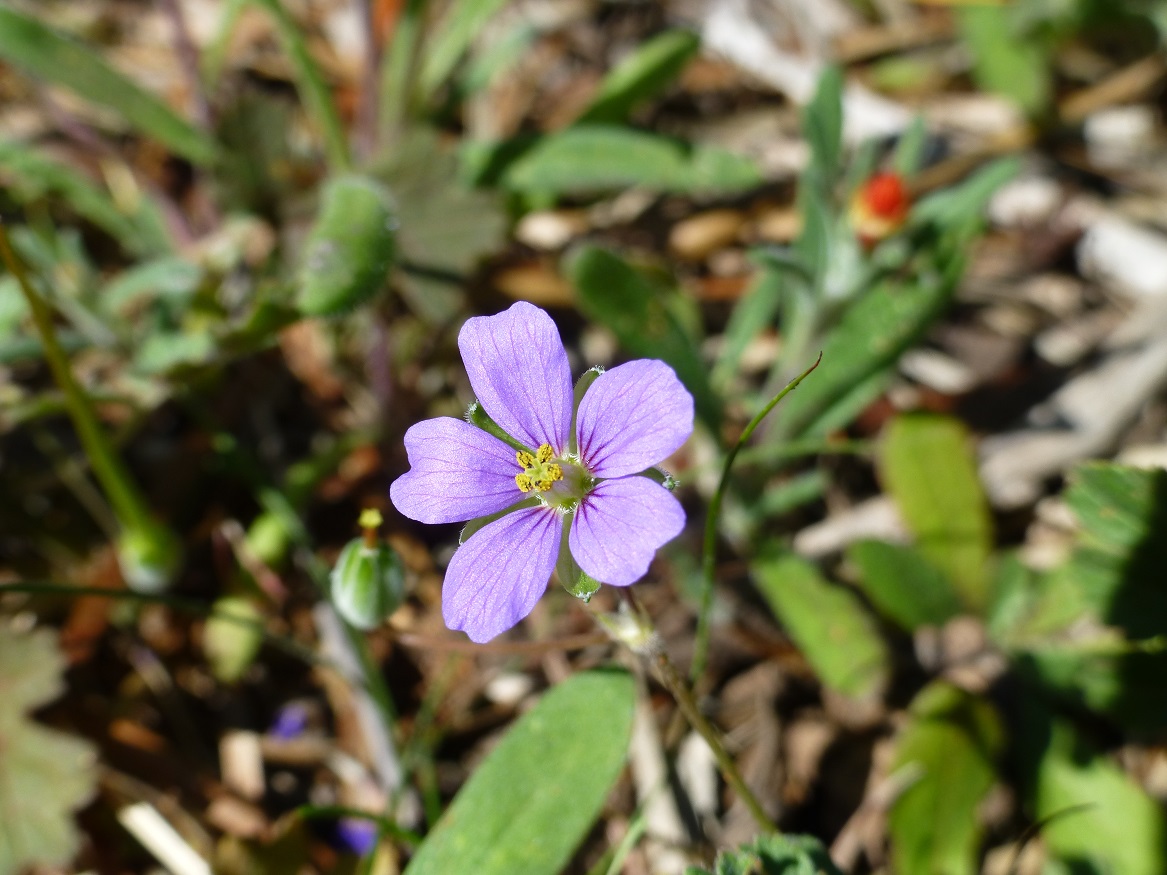 Tiny unknown native flower, Marshall Rock, Bencubbin.
Tiny unknown native flower, Marshall Rock, Bencubbin.
Billiburning Rock, Beacon
At Billiburning Rock I found white everlastings out early only a short drive into the reserve, as well as the beautiful climbing Sundew. I visited this reserve before the spring flush, but was delighted to find white everlastings out even in late July.
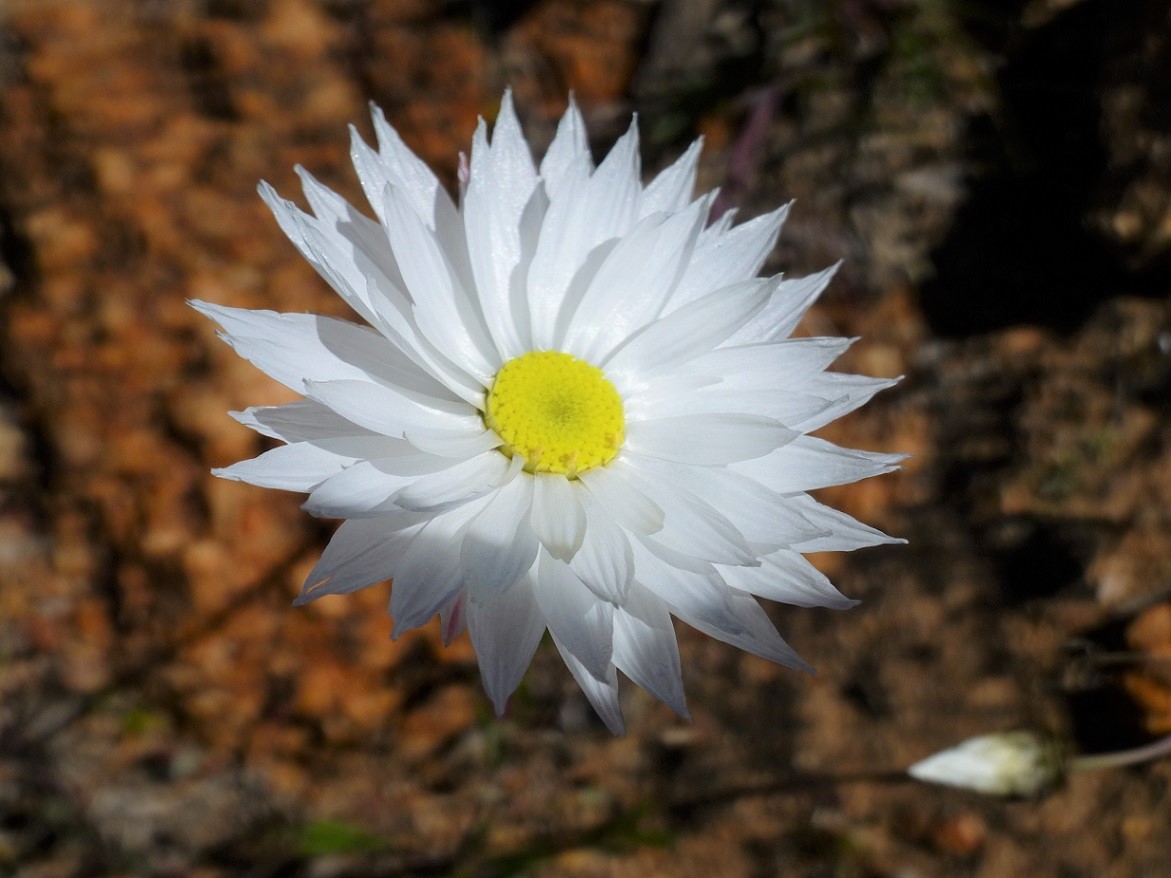 A gorgeous white everlasting (Rhodanthe chlorocephala) at Billiburning Rock, Beacon.
A gorgeous white everlasting (Rhodanthe chlorocephala) at Billiburning Rock, Beacon.
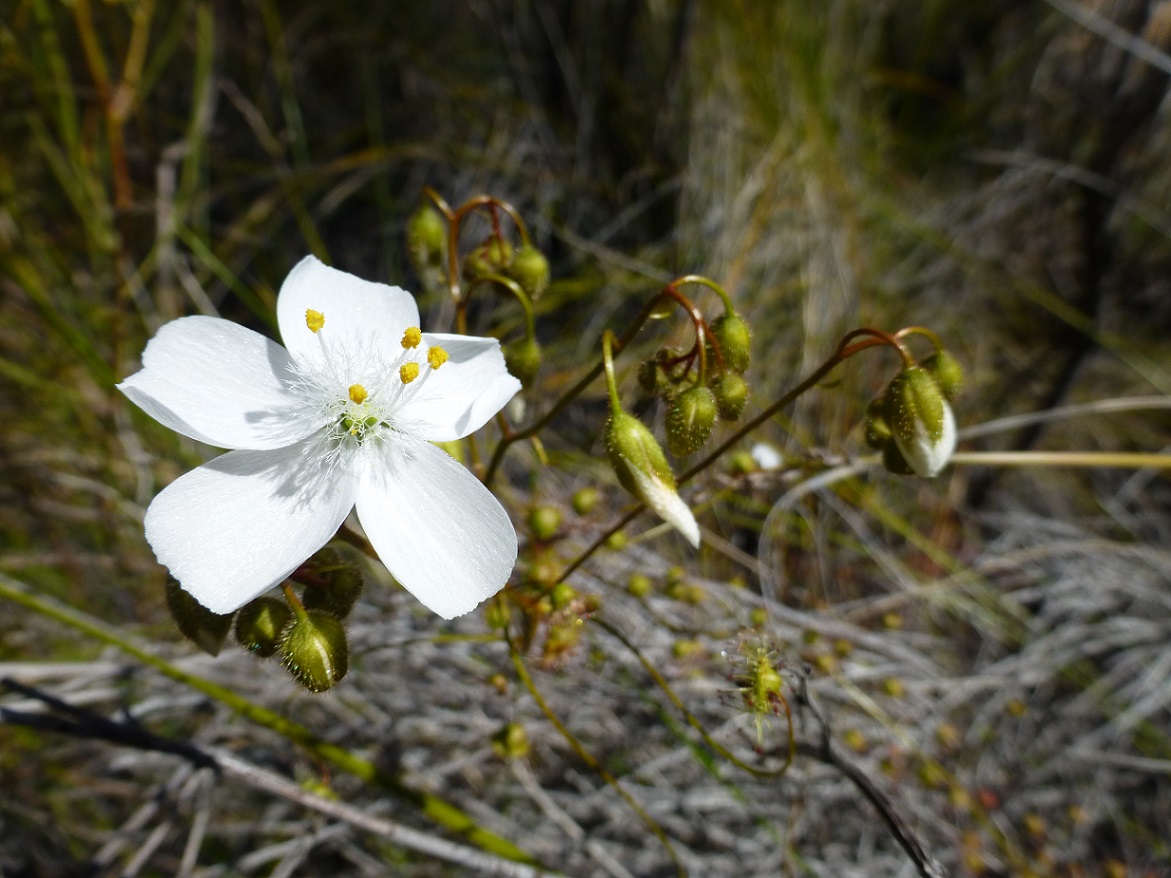 The beautiful native Sundew (Drosera) at Billiburning Rock, Beacon.
The beautiful native Sundew (Drosera) at Billiburning Rock, Beacon.
Beringbooding Rock, Mukinbudin
At Beringbooding I discovered small clusters of pink everlastings, as well as occasional white everlastings around the rock. Some beautiful native flowers could also be seen in full splendour, as shown in the below photos.
 Kunzea pulchella, Beringbooding Rock, Mukinbudin.
Kunzea pulchella, Beringbooding Rock, Mukinbudin.
 White everlastings at Beringbooding Rock, Mukinbudin.
White everlastings at Beringbooding Rock, Mukinbudin.
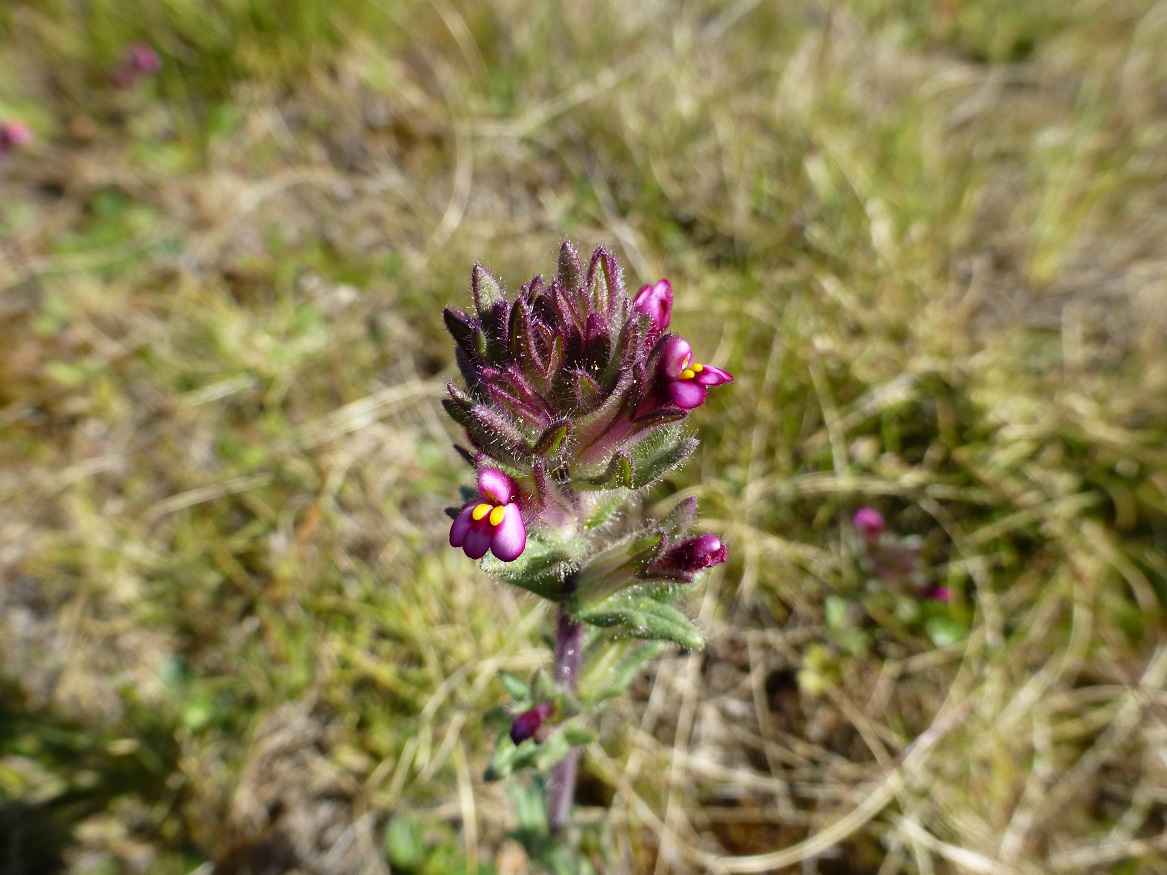 Unknown pink wildflower, Beringbooding Rock, Mukinbudin.
Unknown pink wildflower, Beringbooding Rock, Mukinbudin.
To sum up, for me one of the best parts about experiencing the wildflowers of the Wheatbelt Way is the scenic journey to such beautiful natural locations.
Once there, another of the highlights for me is to see how every person in a group discovers different things, and how each individual reports their own highlights and favourite locations.
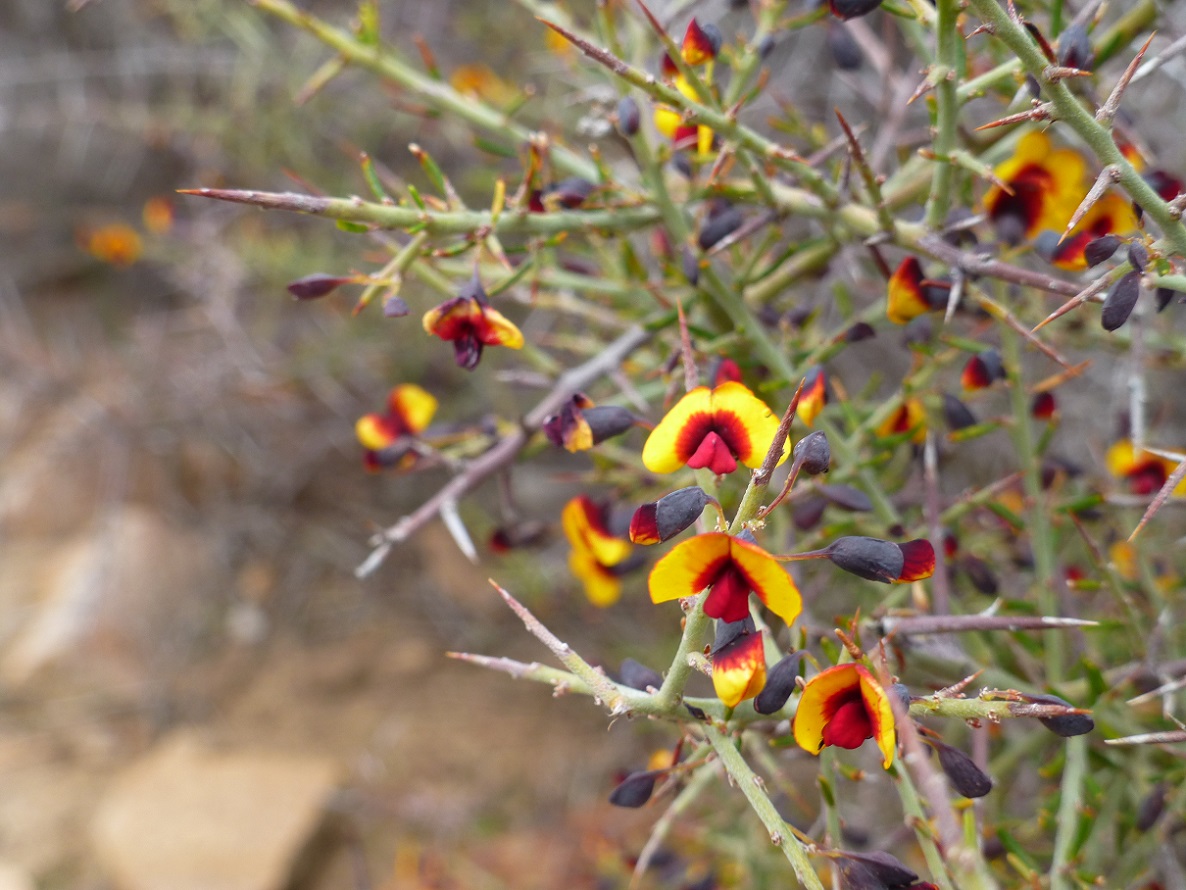 A gorgeous native plant from the Gastrolobium family spotted at Billycatting Hill, Trayning.
A gorgeous native plant from the Gastrolobium family spotted at Billycatting Hill, Trayning.
The Wheatbelt Way wildflowers this spring have been a revelation for me, and I would just like to thank nature for putting on such a mind blowing and unforgettable show!
By Annemaree Jensen who writes at www.extramilewriting.com.au.
